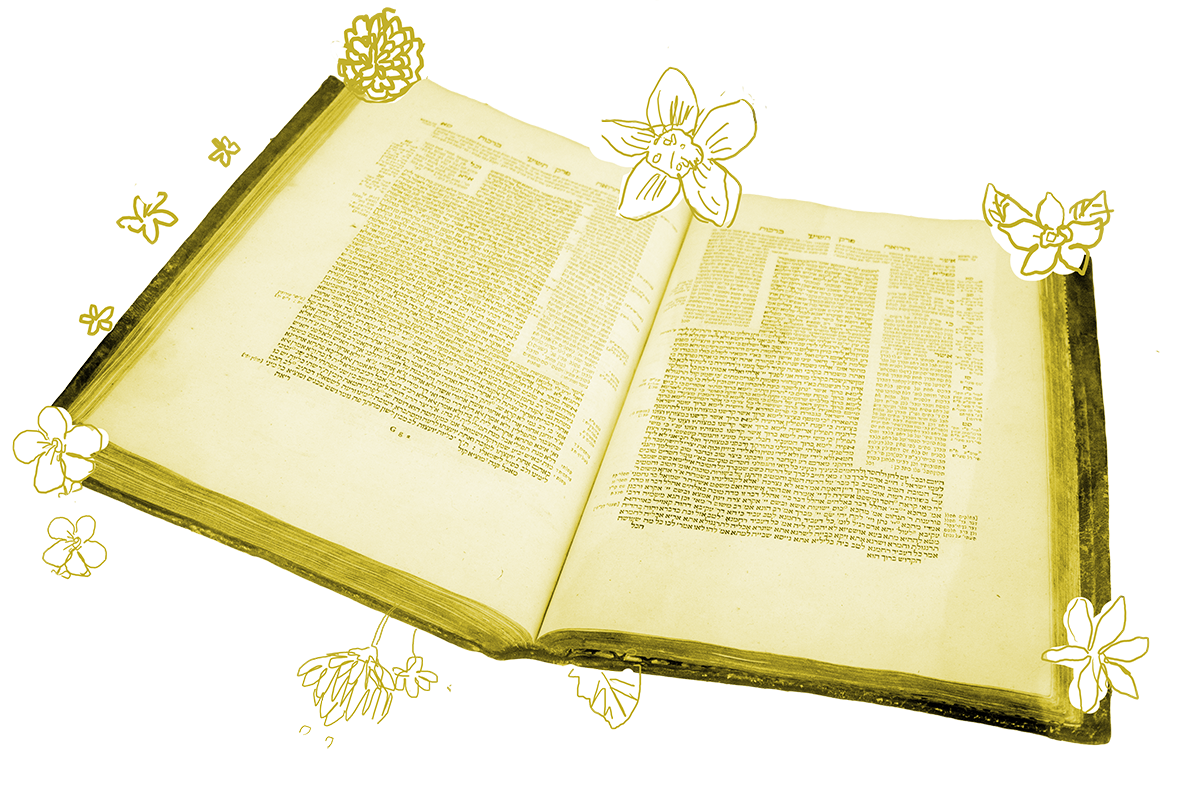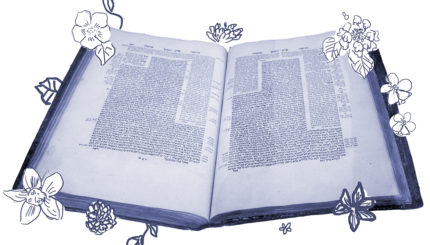Today’s daf begins with a discussion of exactly what words were written on the scroll that was dissolved in the bitter water the sotah was required to drink (see Numbers 5:23), and then pivots to the dust taken from the Temple floor that was also mixed into the potion.
Rava says: For what reason did the Torah say: “Bring dust for the sotah?” It is because if she merits (i.e. passes the test), a child like our patriarch Abraham will emerge from her, as it is written: “I am but dust and ashes,” (Genesis 18:27). But if she does not merit (i.e. fails the test), she shall die and return to her dust.
You may have heard the famous phrase “I am but dust and ashes” but did you know that it came from Abraham’s mouth? When God was incensed at the wicked cities of Sodom and Gemorah and planning to destroy them, Abraham tried to talk God out of it, and tried to balance his own temerity in challenging the creator with an expression of modesty: I am but dust and ashes. In this way, the rabbis link the dust of the bitter waters to either possible outcome of the trial.
Rava further says that the people of Israel merited two mitzvot that involved dust and ashes, respectively: the trial of the sotah and the red heifer, a mysterious burnt offering whose ashes purified people who had contact with the dead (Numbers 19).
Each of these ceremonies, sotah and red heifer, addresses powerful aspects of life: sexuality in one case and death in the other. In both cases, the rituals can have a mysterious and paradoxical effect. The sotah, if proven innocent, will conceive life (Numbers 5:28). The red heifer ashes have the power to purify someone from contact with the dead, yet they make the person who handles them impure. It seems appropriate to tie both rituals to the patriarch Abraham, who in one contradictory episode dared to argue with God while at the same time admitted to being as lowly as the dust.
Rava’s teaching continues:
As reward for that which our patriarch Abraham said (to the king of Sodom): “That I will not take a thread nor a shoe strap nor anything that is yours” (Genesis 14:23), his children merited two mitzvot: The thread of sky-blue wool worn on ritual fringes and the strap of tefillin.
According to Rava, since Abraham didn’t take the spoils of war — even something as humble as a “thread or a shoe strap” — his descendants merited high rewards in the form of mitzvot with straps (for the tefillin, which allowed them to carry God’s name on their very bodies), and thread of tekhelet, a special, mystical shade of blue.
And those fringes contain not just any thread, but one colored with a special deep blue dye that the Torah calls tekhelet:
As it is taught, Rabbi Meir would say: What is different about tekhelet? Tekheletis similar in color to the sea, and the sea is similar to the sky, and the sky is similar to the Throne of Glory, as it is stated: “And they saw the God of Israel; and there was under His feet the like of a paved work of sapphire stone, and the like of the very heaven for clearness” (Exodus 24:10)
Gazing at the blue thread of the tzitzit, Rabbi Meir suggests, can help a spiritual seeker contemplate the transcendent. In Jewish Blues: A History of a Color in Judaism, Gadi Sagiv traces the importance of the color blue in Jewish tradition, from its early predominance in the Tabernacle to its contemporary significance in modern Zionism. Rabbi’s Meir’s saying on our daf, and many more texts throughout Jewish history, emphasize how this color links the mundane with the sublime. Sagiv writes:
“Tekhelet is frequently characterized as a color with contradictory qualities in antiquity as well as in medieval times. Some texts presented tekhelet as a color of spiritual elevation, whereas others depicted it as a portent of danger … Some texts connected tekhelet with divine grace, while others linked it to divine judgment.”
Even a seeming digression into the color blue ties in well with other themes of paradox emphasized on today’s daf. The blue is preserved on a lowly thread, but one that ties us to the heavens, a color of both danger and opportunity. The sotah might be degraded and “returned to the dust,” or she might emerge exultant and give birth to another leader as great as Abraham. Or, to paraphrase Rabbi Akiva, who is quoted later on the daf: The intimate relationship of a man and a woman has the potential to welcome in the divine presence. But without that sanctity, it might light a destructive fire that consumes them both.
Read all of Sotah 17 on Sefaria.
This piece originally appeared in a My Jewish Learning Daf Yomi email newsletter sent on April 15th, 2023. If you are interested in receiving the newsletter, sign up here.



